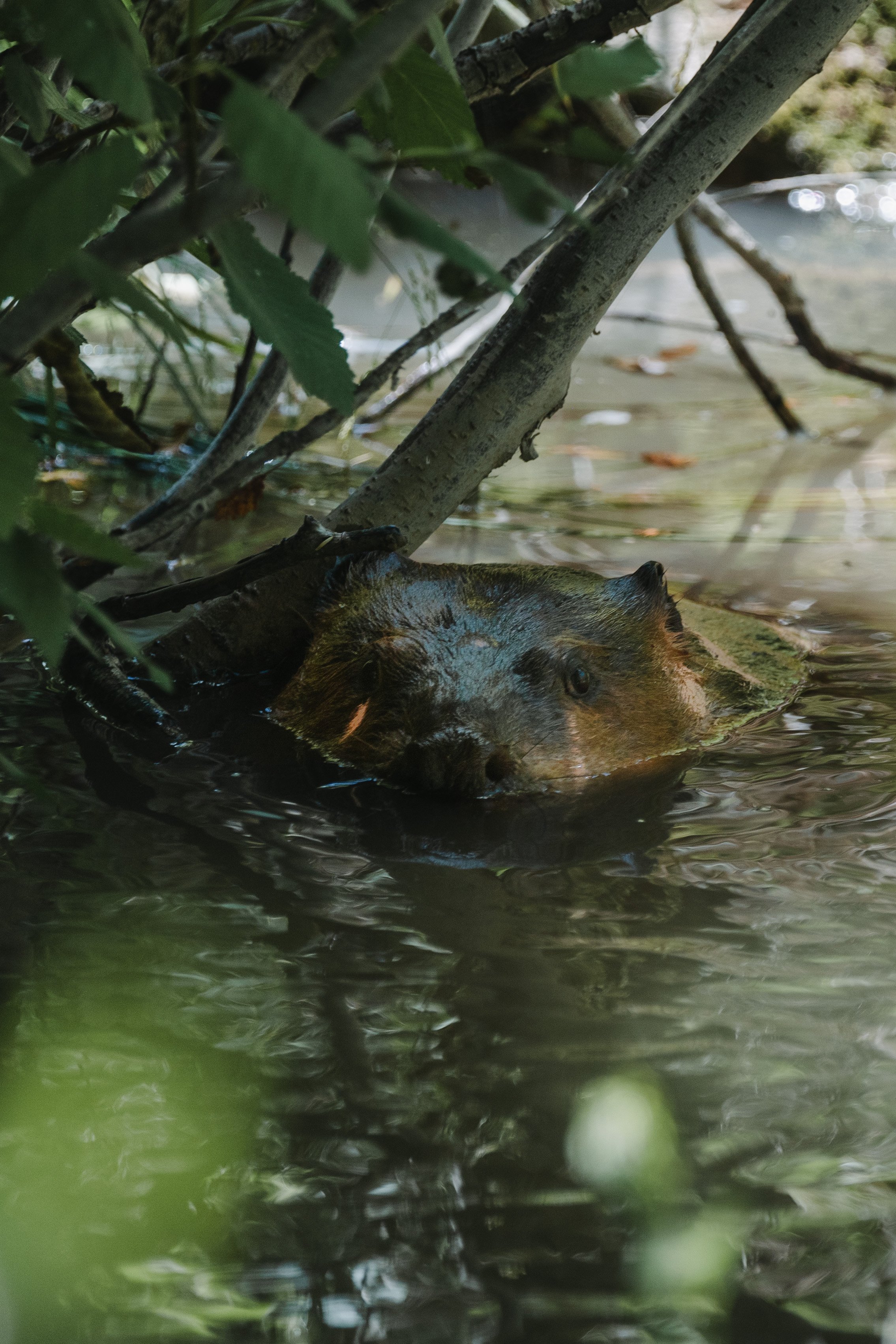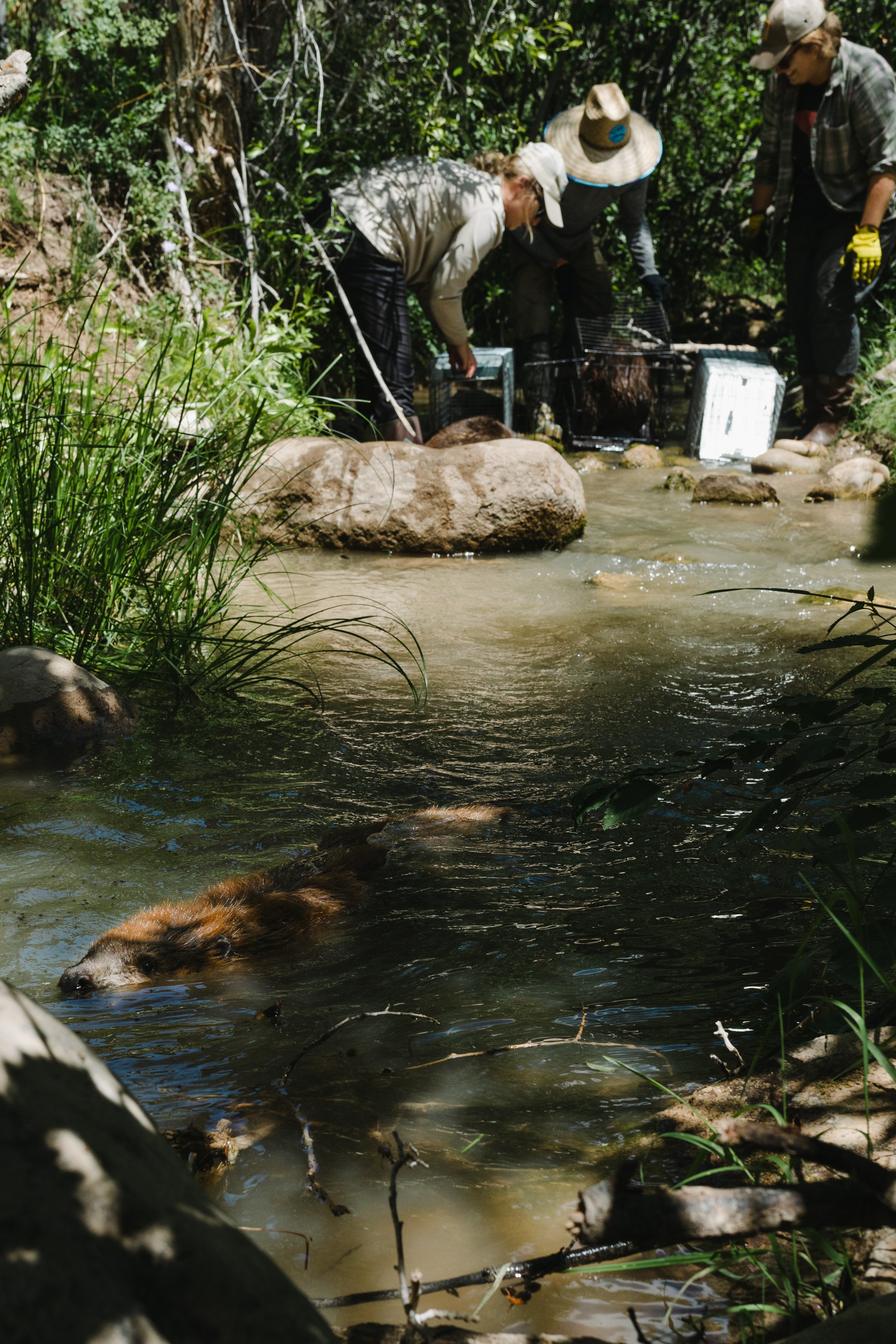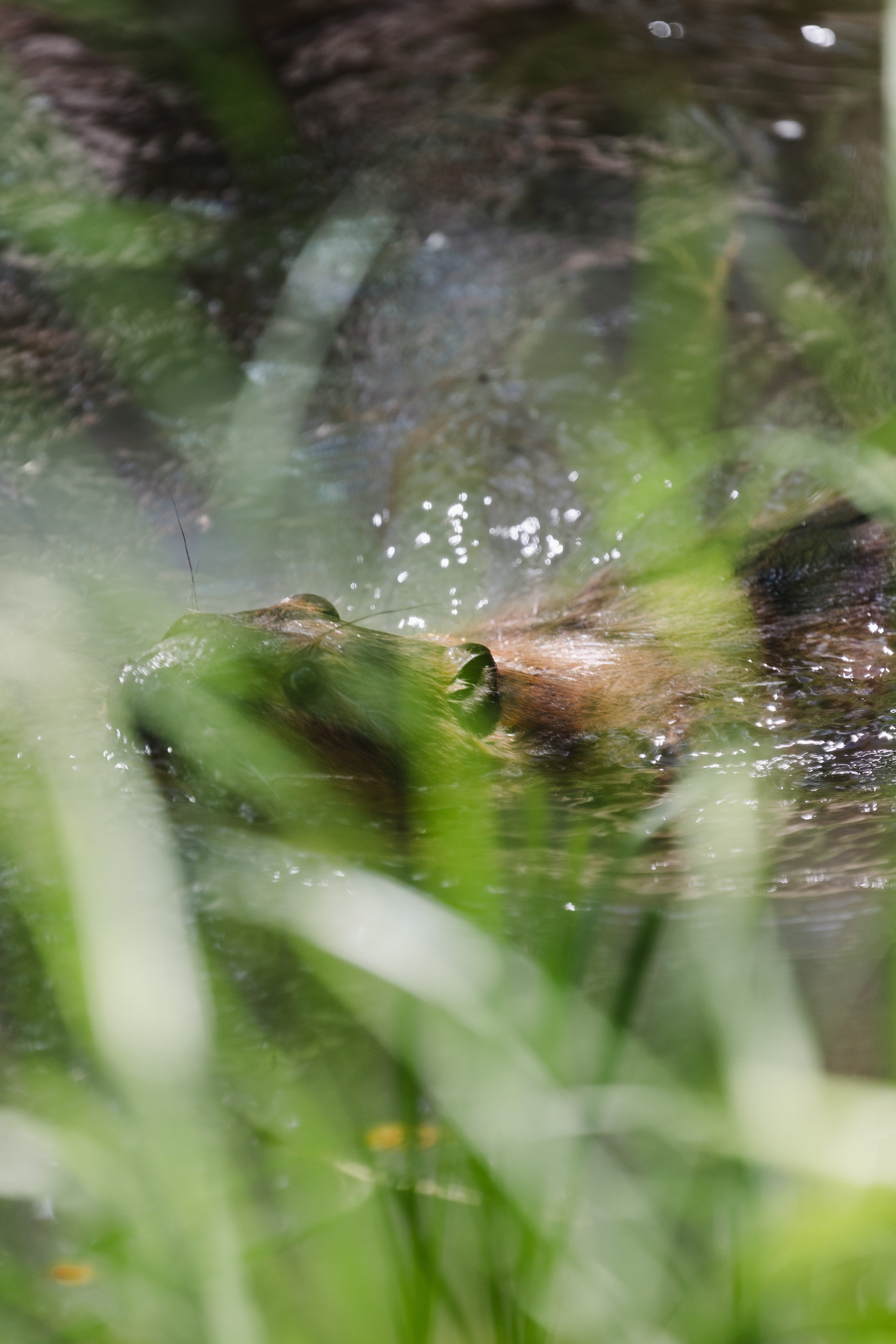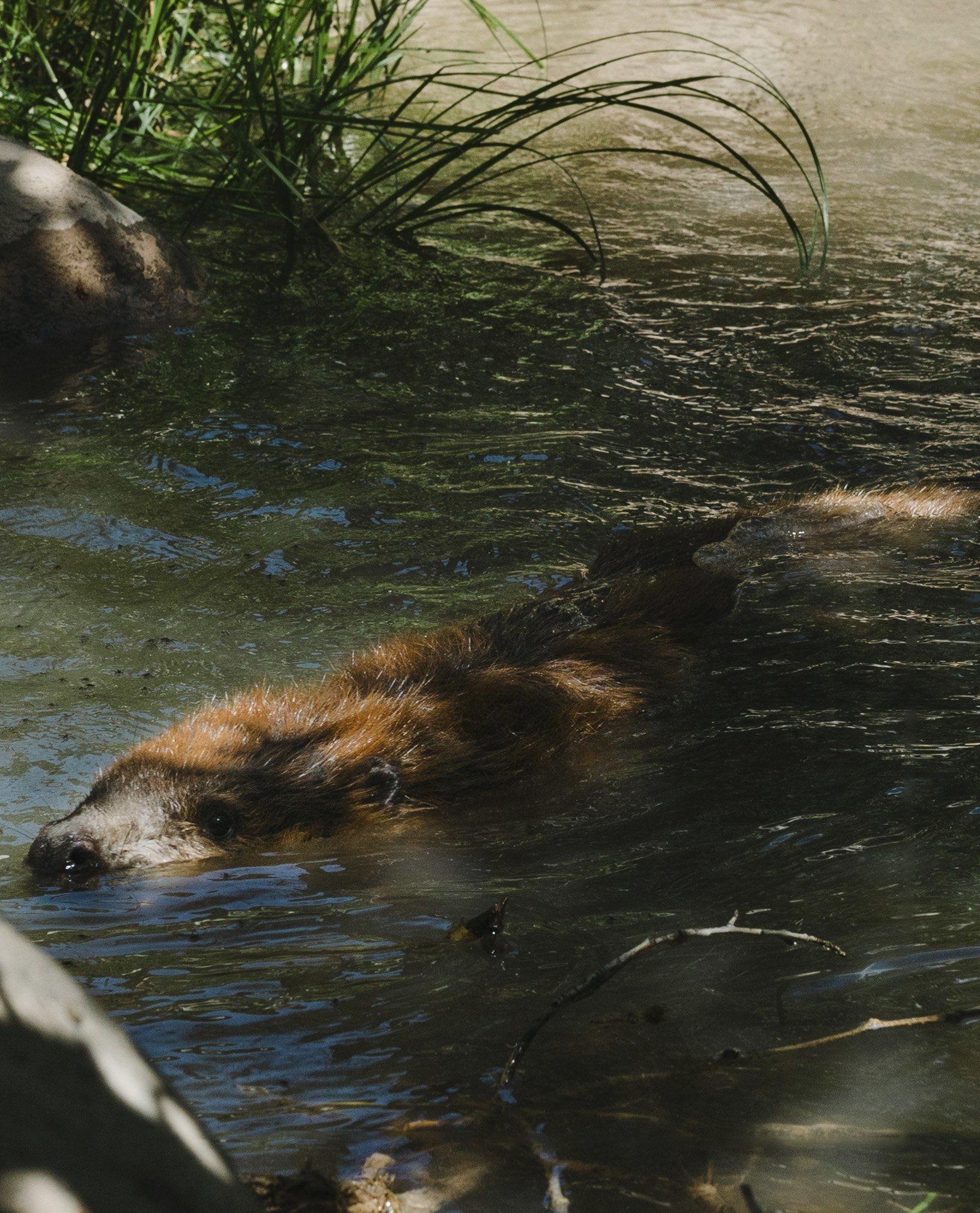Meet the New Beaver Family in Fish Creek
Tucked away behind some bushes downstream, Sierra Hastings had an excellent view of an incredible moment: four beavers making their way out of cages and into the water of Fish Creek. From her vantage point, Sierra, our 2021 Volunteer of the Year, captured beautiful images of these creatures assessing the stream and finding their way around their new home.
In March 2020, Sierra found her life mixed up, as many of us did. She began to take notice of how close she was to nature and began making an effort to volunteer with conservation organizations. She found her way into stream restoration work through ‘beaver dam analog’ building events hosted by Swaner Preserve & EcoCenter in Park City.
“The absolute power of beaver dams and beaver dam analogs to expand the water table and to hold water in our systems is remarkable. It’s an addictive feeling, seeing these works of art come together like they do,” she says about her experience volunteering with the Stream Restoration Program. “Of course I love many amazing species–boreal toads, pikas, coastal brown bears, and our beautiful monarchs–but none compare to beavers.”
Though she says she “went in blind,” as soon as she put on that first pair of waders and began weaving willows through stakes in the stream, she was hooked.
Beaver-Based Restoration
Beaver relocations like this one in Fish Creek are an important part of stream restoration. Experts trap live beavers in areas where they are causing damage to property or infrastructure, and then relocate them to streams where their presence will help with restoration efforts.
Rose Smith, stream ecologist leading the Riparian Restoration Program, explains why this is a big part of restoration:
“Beavers are often called 'ecosystem engineers' because they actively manage the environment to meet their needs for shelter and food. Moose feed on aquatic plants that thrive in beaver ponds. Woodpeckers and other birds find food and homes in dead trees left standing when a new area floods. Fish and amphibians lay their eggs behind dams and rest from other fast-moving sections of the stream. These diverse, complex habitats benefit and meet the needs of many species, humans included.”
This family of beavers was trapped and relocated by Nate Norman of Utah State University’s Beaver Ecology and Relocation Center. Also known as the Beaver Bunkhouse, Nate and his team are some of the leading experts on beaver relocation and restoration. They are responsible for most relocations in Utah.
“It would be great if we were always able to coexist with beavers, but we know it’s sometimes not possible,” Nate says. “But this family has been given another chance to help keep more water in the mountains and fish in the streams. It’s a win for the beaver, as they have another chance at survival, and a win for us if they stay, as they will engineer the stream more effectively and at a much better price than hiring somebody to do it.”
Capturing the New Neighbors
Sierra, a wildlife photographer, accompanied us on this beaver release, eager to photograph her favorite wildlife species. As an artist, Sierra plays an important role in conservation:
“l firmly believe that a picture has the power to inspire. A shared moment of magic, a glimpse into an existence that is not entirely our own - it can forge a connection to the subject in a way that is nothing short of brilliance. It allows us to step into a bigger picture, something much larger than ourselves. It’s a wild world out there, and it has the power to change us for the better if we can give it our attention.”
Humans Mimicking Beavers
Much of the work done on our Stream and Riparian Restoration Program focuses on mimicking beavers. We build structures that imitate beaver dams in areas where they no longer live, known as beaver dam analogs, or BDAs.
“After beavers move out, riverscapes begin to lose their structure. Many beaver-less streams develop steep, eroding banks, which cut off the water source to riparian trees and meadow vegetation,” says Rose.
Our restoration structures, largely built by volunteers, are made of locally sourced wood, rocks, and willow branches that can help expand the floodplain, collect sediment, and restore the stream to a healthier state. This, in turn, helps connect the stream to more vegetation and creates deep pools, bringing the stream back towards a state that can support beaver populations and other wildlife.
This beaver release in Fish Creek is part of a decade-long collaborative effort to restore the Chalk Creek watershed. Since 2019, Sageland Collaborative volunteers and partners have built dozens of beaver dam analogs on this stream. Once heavily incised, or unnaturally cut into the ground, the stream has now started to slow down, meander, and pool in response to these structures.
With a stream now ready to support a beaver population, we released this family into one of these pools. If these beavers take up residence in Fish Creek, they will continue the stream restoration work of volunteers. By improving the existing BDAs and creating their own dams, they will create the complex, life-sustaining ecosystem they are known for, supporting many species of wildlife.
In the words of beaver photographer Sierra: “Beavers, and the significant impacts that they have on ecosystems, are truly one-of-a-kind. They will always and forever be dam-ing up my heart.”
To learn more about stream restoration, or to get involved as a volunteer, visit our project page. There are many upcoming BDA-building dates to sign up for!








